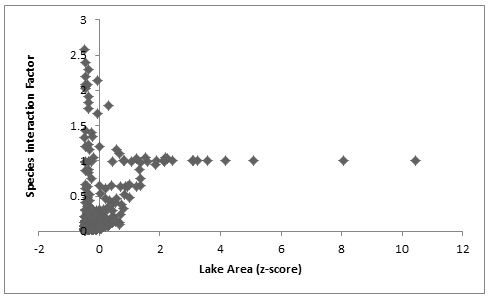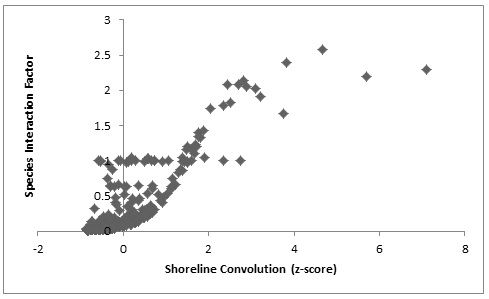

I have attempted an explanation in my draft manuscript:
"Interestingly, Yellow-billed and Pacific Loons can coexist on the same lake in cases when the lakes are large or have convoluted shorelines. This was demonstrated by an increase in the probability of co-occurrence with Shoreline and Area covariates. As well, the SIF showed a positive relationship with Shoreline and Area. High values of Area led to SIF of 1 suggesting that on these lakes, the two species are randomly co-occurring (competition not affecting occupancy). At high values of Shoreline SIF > 1 suggesting there is aggregation on these lakes, likely due to high habitat quality (i.e., lakes with high Area and Shoreline values have more shoreline nesting habitat and larger lakes likely also have higher availability of fish prey). "
I was hoping to see if anyone had any insights into these patterns in the SIF values.